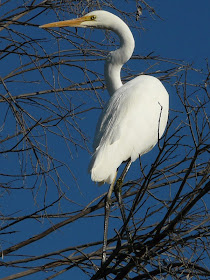Today I have eggs on my mind. (Some might say that this is because my mind is scrambled, but fortunately they're not writing this.) It started when we went out for breakfast in the sun at the cafe at the National Botanic Gardens, long a favourite of ours. Unfortunately the new management seems to be still finding its way and, after an hour, during which we reluctantly sent back stone cold (but cooked!) eggs twice, we gave up and went home to cook our own.
However it was not all a disaster, as it did get me thinking about
how wonderful is the too often taken-for-granted egg, in its original state.
 |
Emu eggs, south-west Queensland.
(For some reason all these pictures are old, scanned from slides -
my apologies and I must make an effort to take some nice digital egg pics!) |
Essentially all female animals lay eggs, and have done so for hundreds of millions of years. Generally when we talk about eggs however, we're referring to amniotic eggs - the amniotes, put simply, are the group of vertebrates that include reptiles, birds and mammals. One of the most amazing inventions of reptiles was the enclosing of the embryo in a protective shell. By cutting off the embryo from the world, and supplying it with a larder comprising a built-in food and water supply, these pioneering reptiles could move away from water and begin to take over the earth. The amniotic egg seems to have arisen some 320 million years ago.
 |
Southern Angle-headed Dragon (Hypsilurus spinipes) laying eggs,
Lamington National Park. |
A fabulous series of fossilised dinosaur eggs from six different species
which between them lived from 146 to 65 million years ago reveals the
developing sophistication of eggs, with increasing numbers of air cells
and additional layers being added to the shell. In other words they were
becoming more bird-like - hardly surprising given that birds are, for
all practical purposes, living dinosaurs.
The actual process of forming a bird's egg is remarkably complex and detailed; it's worth considering, albeit briefly. The yolk comes first; this is not, as sometimes supposed, the embryo, but it is the embryo's packed lunch; the embryo itself starts life as a small collection of tissues on the yolk surface. If the egg is not fertilised in the first 20 minutes of its life, too late! The subsequent inexorable addition of layers prevents it from happening. (Though except for domestic chooks - 'hens' for my non-Australian readers - this rarely occurs.) As the eggs slowly rotates, four layers of albumen - the white - come next during the next couple of hours; these provide both a stabilising cushion and a water supply. During the next hour the egg moves down a narrow passage where two layers of supporting membrane are added. They can be revealed by carefully peeling an egg.
 |
| White-naped Honeyeater nest and eggs, Tidbinbilla Nature Reserve. |
Finally, the most labour-intensive and time consuming stage, the addition of the shell itself, takes some 16 hours. Crystalline calcium carbonate (which also makes up chalk, coral, snail shells etc) is deposited, along with a protein matrix to glue it together. Thousands of pores must also be provided, precisely sized to allow gas exchange between the embryo and the outside world, but to exclude micro-organisms. Pigments, both in the crystal structure itself, and as surface dyes, are also provided at this stage. If the egg is to be laid in a dark place, such as a tree hollow or a burrow, it will be white; if it is to be in the open it requires camouflage and the pigmentation can be quite complex.
 |
| Rufous Songlark nest and eggs on the ground, Goulburn River National Park. |
Most eggs are oval - ie egg-shaped! - so that they roll back to the middle of the nest. Eggs laid in hollows or burrows can't roll away anywhere and can thus afford to be round - this is the most efficient shape in terms of least surface, and hence least shell material. Eggs laid on flat ground or on ledges tend to the most conical in shape to stop them rolling away.
 |
| Red-capped Plover egg and 'nest', Comerong Island. |
The whole process takes about 20 hours. Only one egg is laid per day, to minimise excess weight in the mother who still needs to fly, unless she's an emu or a penguin, though a string of small yolks await the signal to start. She generally lays first thing in the morning, to reduce baggage for the crucial early morning food gathering, and to allow the fragile shell to develop while she's resting and still.
There is much more to be said of course, on both eggs and nests, and in time we'll say it. Meantime, if you're in the Southern Hemisphere there is likely to be a clutch of eggs not far from you at the moment; spare a thought for what's involved.


















































